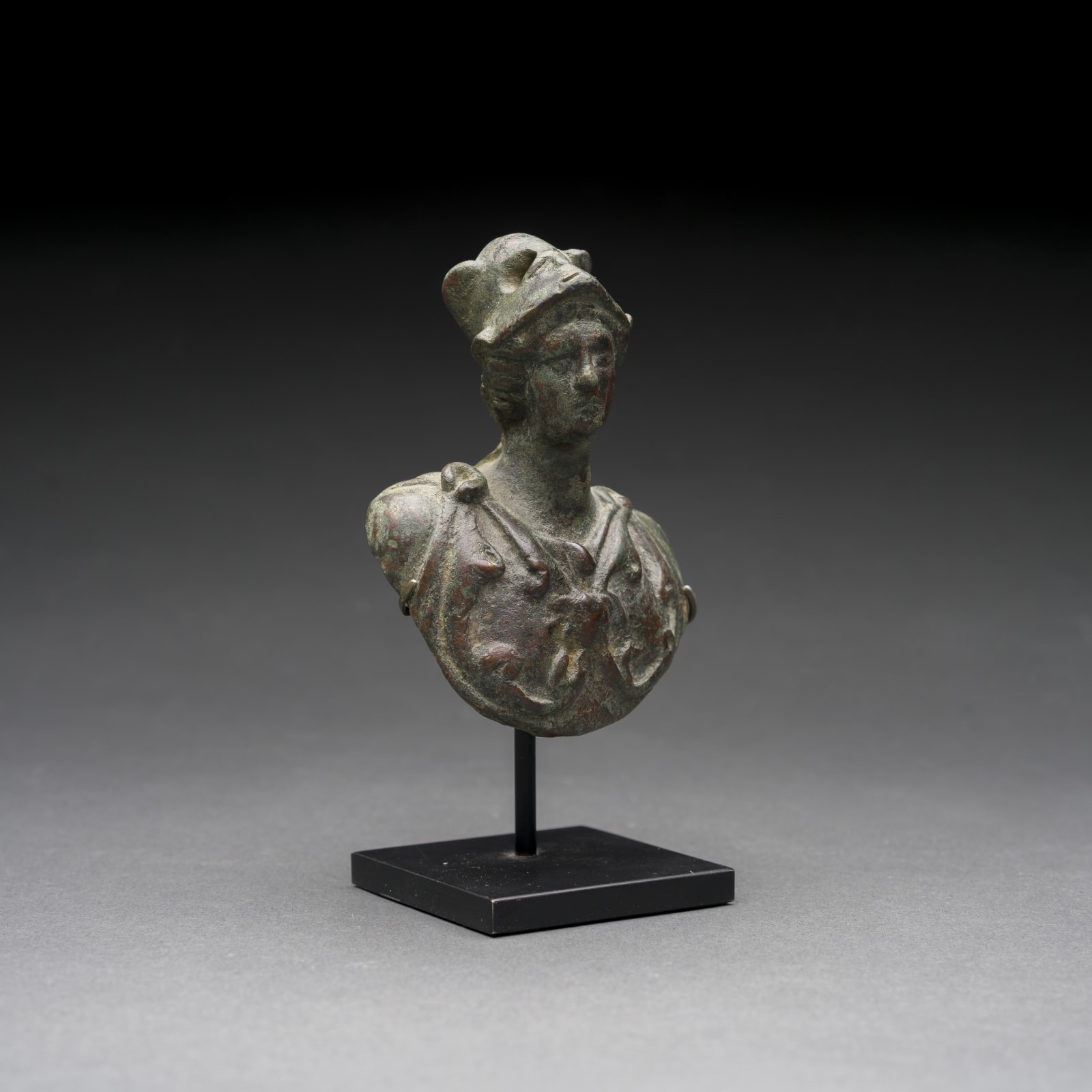Roman Bronze Weight in the Form of a Bust of Minerva, 100 CE - 300 CE
Bronze
height 8.9 cm
height 3 1/2 in
height 3 1/2 in
X.0170
The basis or Roman weights and measures was the libra, called the Roman pound, which is roughly equivalent to eleven and a half ounces. However, the actual weight of the...
The basis or Roman weights and measures was the libra, called the Roman pound, which is roughly equivalent to eleven and a half ounces. However, the actual weight of the libra is difficult to determine, as it varied greatly in antiquity. Traditionally, the libra was determined by the weight of a coin, the gold aureus of Augustus served as the standard from 27 B.C. until 296 A.D., presumably the period when this weight was created. Forged in the form of a bust of Minerva (known to the Greeks as Athena), this weight may have been employed in the shop of an ancient merchant. However, considering the masterful artistry of the piece, it is unlikely that it would have been used on a daily basis. Instead, it may have rested on one side of a scale in order to determine the authenticity of currency when disputes arose. Goddess of arts and crafts, here Minerva is depicted wearing her characteristic aegis breastplate and Corinthian helmet, revealing her alternate role as a goddess of war. The helmet has been pierced horizontally in order to be suspended.



